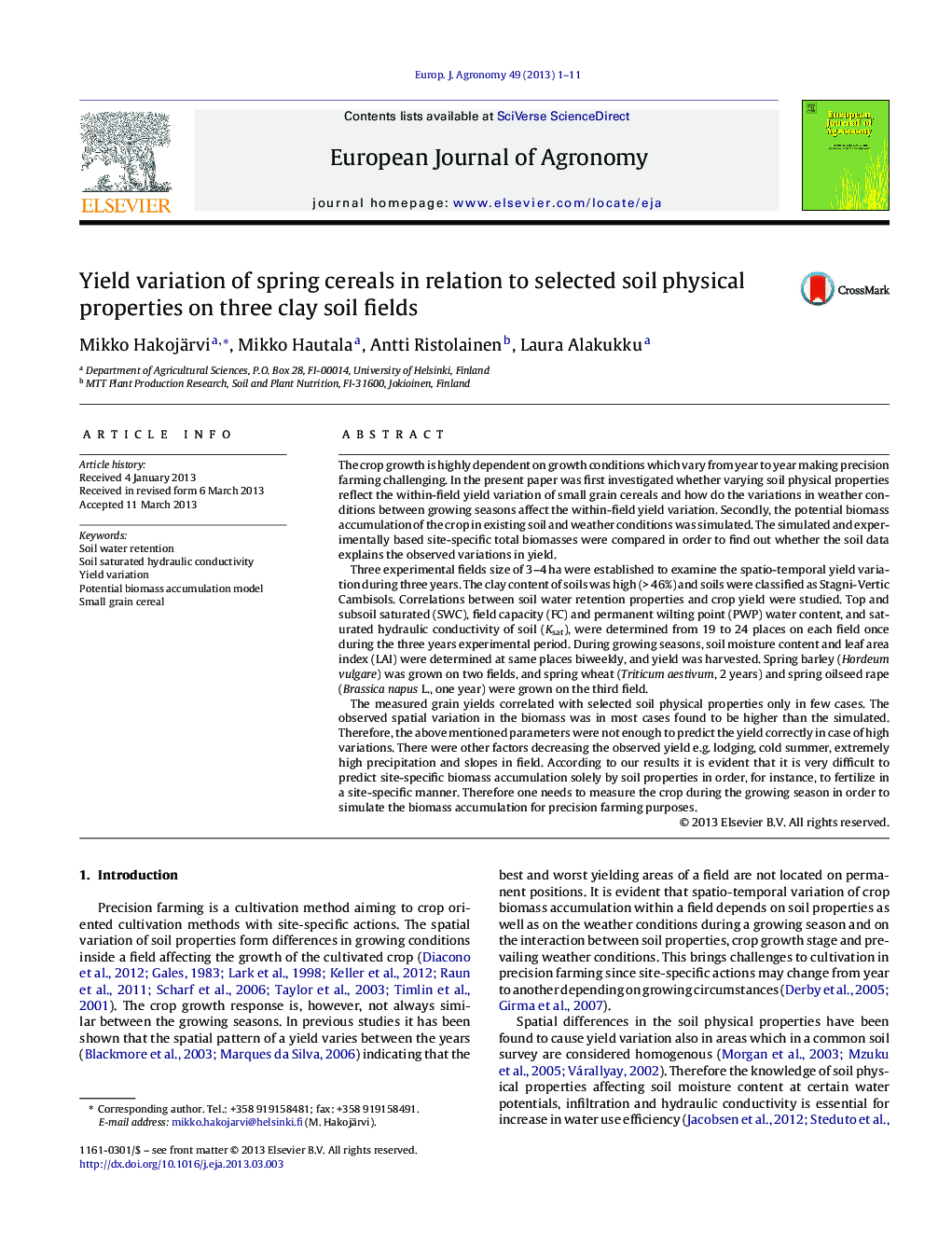| کد مقاله | کد نشریه | سال انتشار | مقاله انگلیسی | نسخه تمام متن |
|---|---|---|---|---|
| 4509082 | 1624477 | 2013 | 11 صفحه PDF | دانلود رایگان |

• Soil and crop observations together with modeling were used to study the yield.
• Soil PAWC did not significantly correlate with yield.
• Soil Ksat correlated with yield only in few cases.
• The simulated variation of the potential yield was lower than the observed.
The crop growth is highly dependent on growth conditions which vary from year to year making precision farming challenging. In the present paper was first investigated whether varying soil physical properties reflect the within-field yield variation of small grain cereals and how do the variations in weather conditions between growing seasons affect the within-field yield variation. Secondly, the potential biomass accumulation of the crop in existing soil and weather conditions was simulated. The simulated and experimentally based site-specific total biomasses were compared in order to find out whether the soil data explains the observed variations in yield.Three experimental fields size of 3–4 ha were established to examine the spatio-temporal yield variation during three years. The clay content of soils was high (> 46%) and soils were classified as Stagni-Vertic Cambisols. Correlations between soil water retention properties and crop yield were studied. Top and subsoil saturated (SWC), field capacity (FC) and permanent wilting point (PWP) water content, and saturated hydraulic conductivity of soil (Ksat), were determined from 19 to 24 places on each field once during the three years experimental period. During growing seasons, soil moisture content and leaf area index (LAI) were determined at same places biweekly, and yield was harvested. Spring barley (Hordeum vulgare) was grown on two fields, and spring wheat (Triticum aestivum, 2 years) and spring oilseed rape (Brassica napus L., one year) were grown on the third field.The measured grain yields correlated with selected soil physical properties only in few cases. The observed spatial variation in the biomass was in most cases found to be higher than the simulated. Therefore, the above mentioned parameters were not enough to predict the yield correctly in case of high variations. There were other factors decreasing the observed yield e.g. lodging, cold summer, extremely high precipitation and slopes in field. According to our results it is evident that it is very difficult to predict site-specific biomass accumulation solely by soil properties in order, for instance, to fertilize in a site-specific manner. Therefore one needs to measure the crop during the growing season in order to simulate the biomass accumulation for precision farming purposes.
Journal: European Journal of Agronomy - Volume 49, August 2013, Pages 1–11